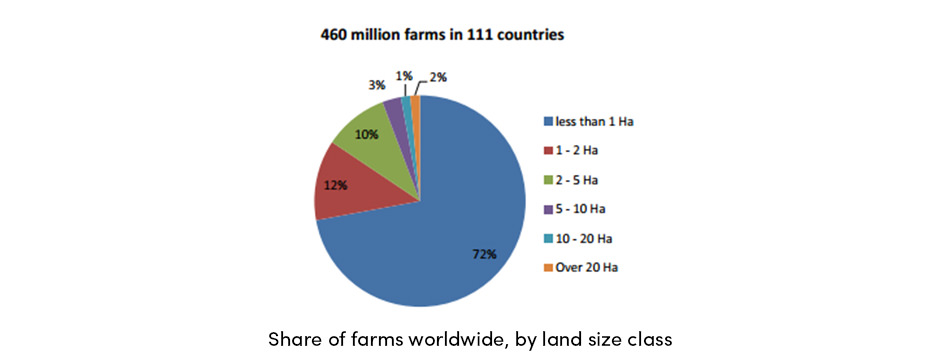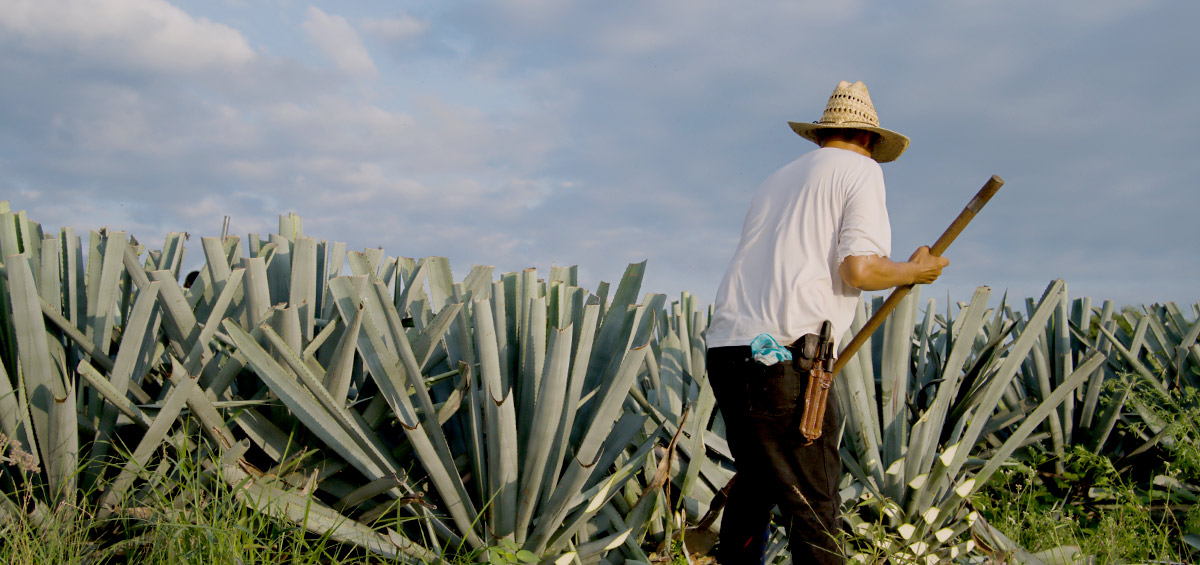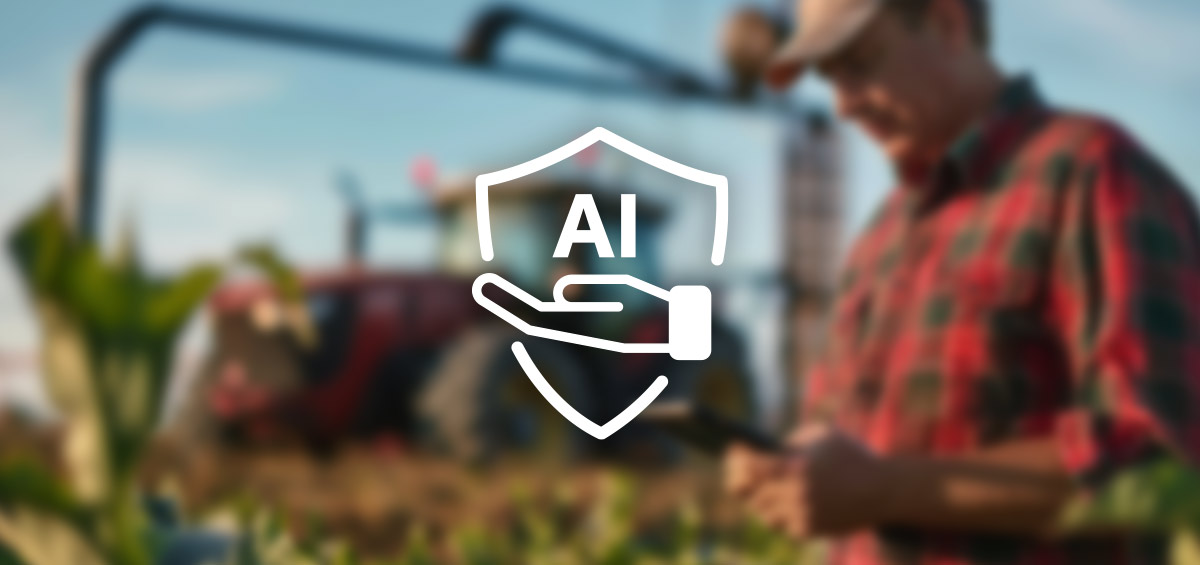The most common necessity among all human beings worldwide is food. We all must eat regularly in order to maintain our health. Therefore, farming is the most important industry, as it provides us with life sustaining food. According to FAO, there are over 570 million farms throughout 161 countries worldwide. The vast majority, 74 percent of all farms, are located in East Asia (China) and South Asia (India), in lower to upper-middle income countries.
Farm sizes and the total number of farms change greatly over time as a result of factors such as population growth, agricultural development, land policies, and other global factors.
Most of the world’s farms are very small. Of 460 million farms worldwide, within 111 countries, 72 percent of the farms are smaller than one hectare in size; 12 percent are 1-2 hectares in size, and 10 percent are 2-5 hectares. Only 6 percent of the world’s farms are larger than 5 hectares, which represent 88 percent of the world’s farmland.
As stated, many farms are very small. Because they are so small (relatively speaking), at least 90 percent of these are owned by individual farmers, small groups of individuals, or family farmers (known as smallholders). Smallholders are family-focused and grow crops mainly for their own consumption, using family labor for production. Those goods not needed for their own consumption are sold. Money earned from selling these products is how many make their living. Smallholders are mainly located in low-income areas in rural, developing areas within Sub-Saharan Africa and East Asia. They not only suffer from a lack of farming materials but also tend to be the most negatively affected by climate change.
The allocation of farms can also be seen below, through a satellite picture depicting farm size. According to this image, African and Asian farmers have the smallest farms, varying from very small to small. Medium and larg-sized farms are dominant in North America, South America, Europe, and Australia.
Climate change affects the soil quality, available water resources and is the main cause of destructing weather conditions such as drought, hail, and frost which drastically lower the yield and thus the farmer’s productivity. All that reflects on the total size of farmland; due to lack of farm knowledge and access to modern technologies such as resistant varieties, fertilizers, pesticides, various sensors, and management software, smallholders are forced to decrease total farmland share. Consequently, they are on the edge of existence. Unlike developing countries, developed countries with middle to higher incomes in agriculture are less affected by climate change. One of the main reason is the availability of farm commodities such as quality seeds, fertilizers, pesticides, water, high-tech farm equipment, and modern farm management software. Farmers are able to fight the climate change, aiming to produce high and quality yield.
Another global problem farmers are faced with is the global food demand due to rapid human population growth. Having in mind that global food demand will reach a number of 9.6 billion by 2050, the goal is to produce more on the same land area by following sustainable farm management practices and thereby decrease carbon dioxide and other greenhouse gas emissions.
Various farming techniques, used to achieve global food demand, also have a great influence on the flow of future crop production. Farming practices like proper tillage, regular crop rotation, soil analysis, good nutrient and irrigation management as well as pest control can increase farmer’s yields. This is the most important for farmers in developing countries. Moreover, better management, access to real-time pricing information, improved profits and productivity, and reduced market segmentation improved access to these farm commodities could increase global farm production nearly by 60 percent.







